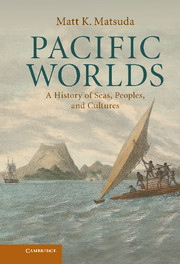Book contents
- Frontmatter
- Contents
- Illustrations
- Maps
- Acknowledgments
- Map
- Introduction: Encircling the ocean
- 1 Civilization without a center
- 2 Trading rings and tidal empires
- 3 Straits, sultans, and treasure fleets
- 4 Conquered colonies and Iberian ambitions
- 5 Island encounters and the Spanish lake
- 6 Sea changes and spice islands
- 7 Samurai, priests, and potentates
- 8 Pirates and raiders of the Eastern seas
- 9 Asia, America, and the age of the galleons
- 10 Navigators of Polynesia and paradise
- 11 Gods and sky piercers
- 12 Extremities of the Great Southern Continent
- 13 The world that Canton made
- 14 Flags, treaties, and gunboats
- 15 Migrations, plantations, and the people trade
- 16 Imperial destinies on foreign shores
- 17 Traditions of engagement and ethnography
- 18 War stories from the Pacific theater
- 19 Prophets and rebels of decolonization
- 20 Critical mass for the earth and ocean
- 21 Specters of memory, agents of development
- 22 Repairing legacies, claiming histories
- Afterword: World Heritage
- Notes
- Index
13 - The world that Canton made
Published online by Cambridge University Press: 05 June 2012
- Frontmatter
- Contents
- Illustrations
- Maps
- Acknowledgments
- Map
- Introduction: Encircling the ocean
- 1 Civilization without a center
- 2 Trading rings and tidal empires
- 3 Straits, sultans, and treasure fleets
- 4 Conquered colonies and Iberian ambitions
- 5 Island encounters and the Spanish lake
- 6 Sea changes and spice islands
- 7 Samurai, priests, and potentates
- 8 Pirates and raiders of the Eastern seas
- 9 Asia, America, and the age of the galleons
- 10 Navigators of Polynesia and paradise
- 11 Gods and sky piercers
- 12 Extremities of the Great Southern Continent
- 13 The world that Canton made
- 14 Flags, treaties, and gunboats
- 15 Migrations, plantations, and the people trade
- 16 Imperial destinies on foreign shores
- 17 Traditions of engagement and ethnography
- 18 War stories from the Pacific theater
- 19 Prophets and rebels of decolonization
- 20 Critical mass for the earth and ocean
- 21 Specters of memory, agents of development
- 22 Repairing legacies, claiming histories
- Afterword: World Heritage
- Notes
- Index
Summary
Off the coasts of Vanua Levu, Fiji, during the reign of Naulivou, voyaging chiefs from the Bau region one day regarded a strange vessel from beyond the coastal arrowroot and tobacco weeds. The outlanders made shore and offered iron hoop, knives, and hatchets, and unknown animals like geese, a monkey, and a cat. The chiefs had long traded canoes, woven mats, and spears with Tongans, but the outsiders wanted only croppings of heavy trees with rough, mottled bark, unsuitable for canoes, which they cut, scored, and loaded into their vessel. The boat would be only one of many to follow, and in a few years, the chiefs were not only trading, but negotiating contracts for their forests and the work gangs to cut and haul them.
Many of the ships then made port in a place largely unknown to the chiefs of Bau. In April 1805, the governor of New South Wales wrote from Sydney, relating “the circumstances of a small Vessel belonging to an Individual being sent in quest of the Bêche-de-Mer. That Vessel is returned, and altho' they failed in that Object, yet they acquired another of not less Value, namely, Sandalwood.” It had been long known, according to the Governor, that the aromatic wood “was a production of some of the Feejee Islands, which are a Group hitherto not much known.” He induced an expedition to survey, barter, and harvest some tons of the wood, pleased that “it may hereafter be an advantageous Object of Commerce with China.”
- Type
- Chapter
- Information
- Pacific WorldsA History of Seas, Peoples, and Cultures, pp. 176 - 196Publisher: Cambridge University PressPrint publication year: 2012



